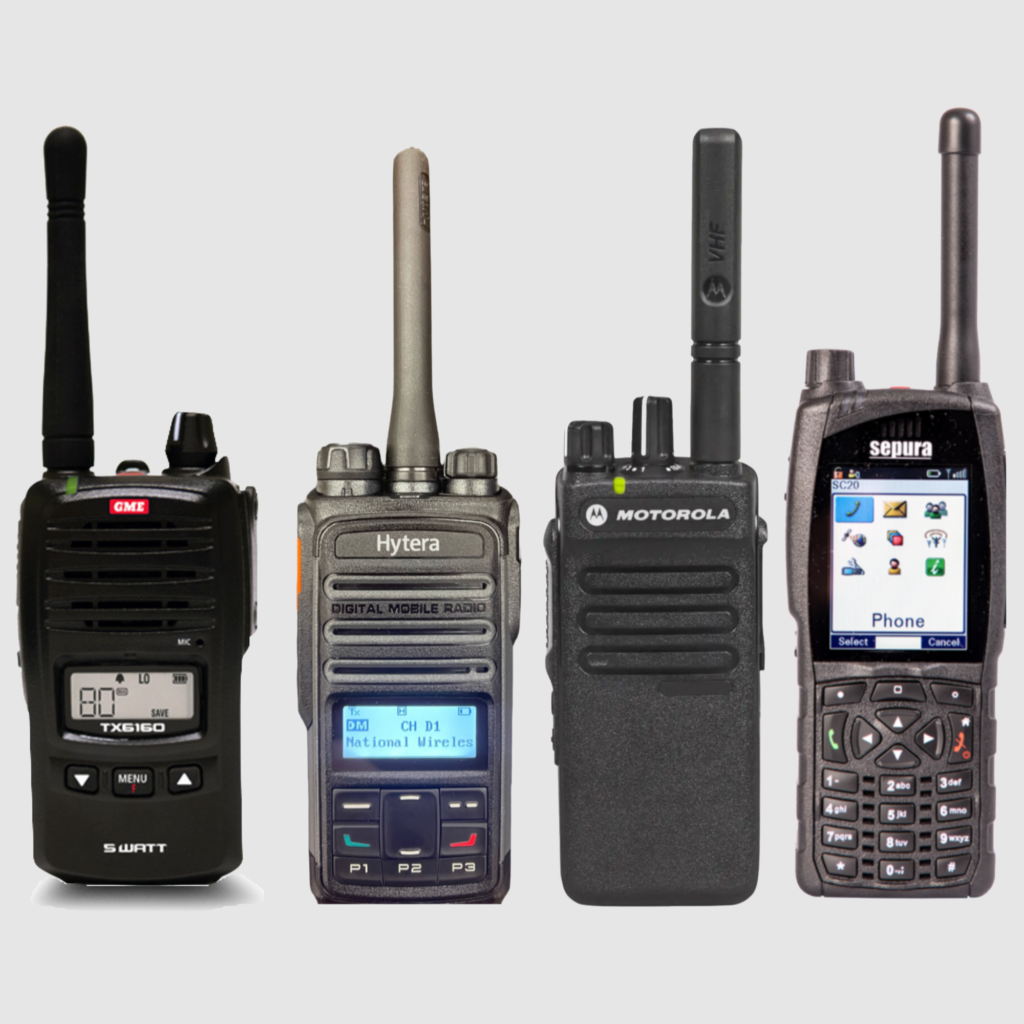
Handheld Walkie-Talkie Radios
Handheld walkie talkie radios are portable two-way communication devices that operate on radio frequencies. They are designed for short-range communication and are commonly used in outdoor activities, construction sites, security, and emergency services. These devices typically come equipped with a microphone, speaker, push-to-talk button, and volume controls. They operate using rechargeable batteries that can last for several hours. Some walkie talkies also offer additional features such as weather updates, vibrating alerts, and noise-reducing technology. They are a reliable and cost-effective means of communication in environments where mobile phone coverage may be limited or unreliable.
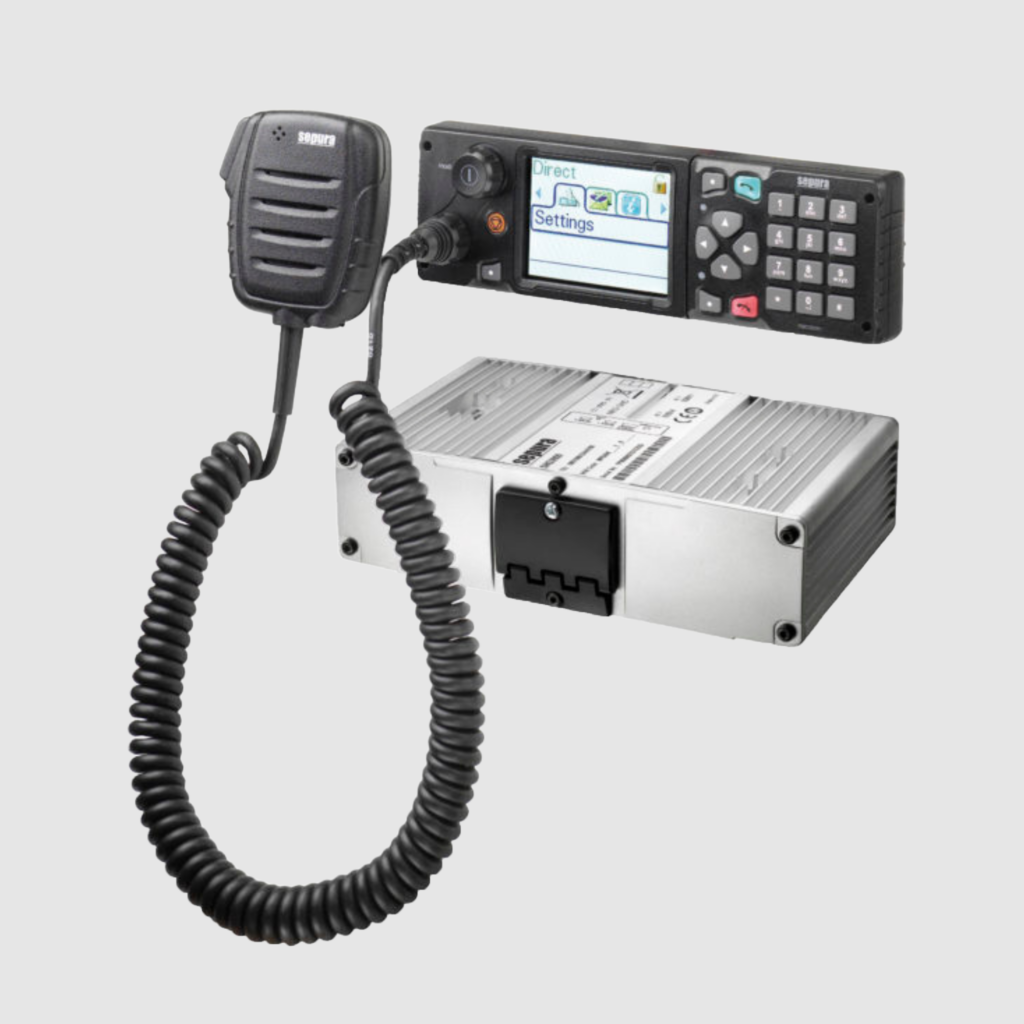
Mobile Two-Way Radios
Mobile two-way radios enable communication between two or more people within a certain range. They are commonly used in industries such as emergency services, transportation and mining. These radios allow for direct, immediate communication, regardless of location, without the need for cell towers or Wi-Fi. They are sturdy, easy to use, and operate on vehicle power. Some models also offer enhanced features such as GPS tracking, Bluetooth connectivity, and more. Overall, mobile two-way radios provide reliable communication essential for safety and productivity in various settings.
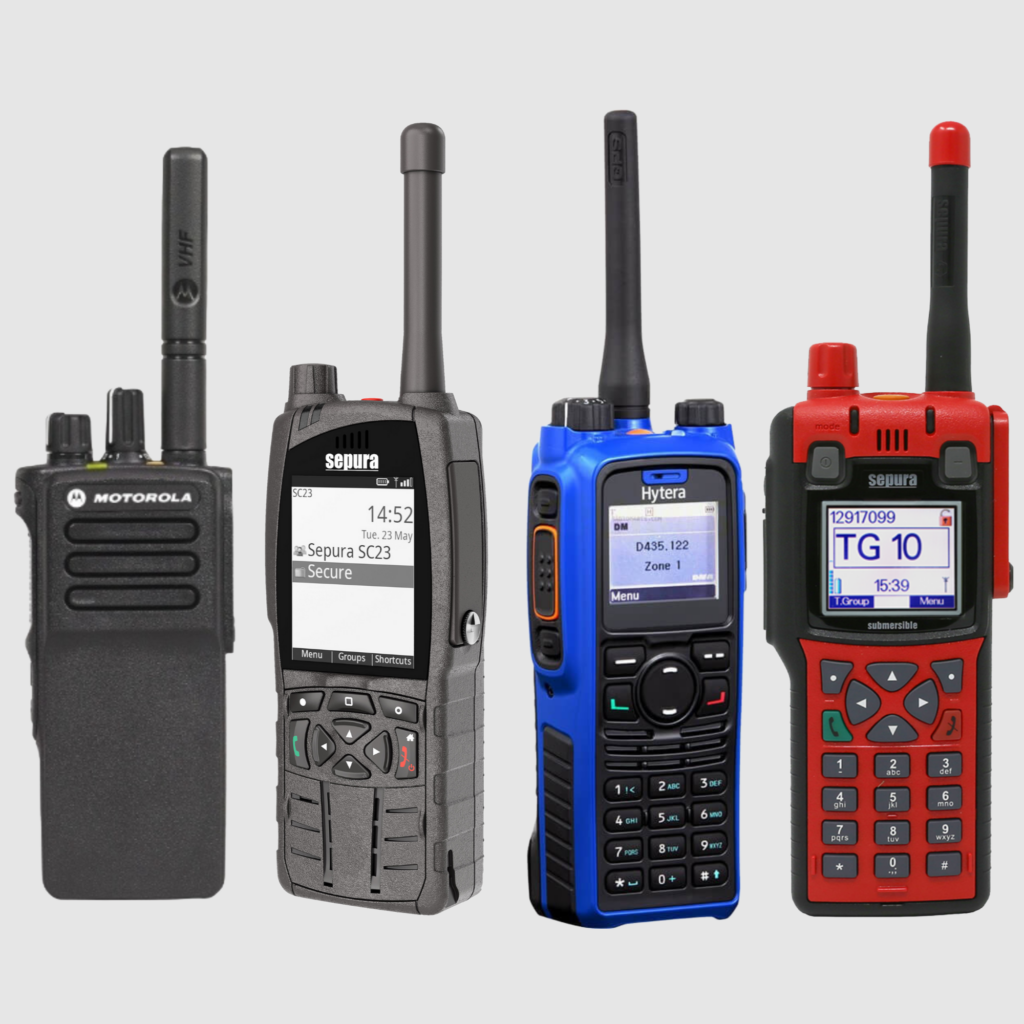
Intrinsically Safe Radios
Intrinsically safe radios are communication devices that have been designed to operate in hazardous environments without generating sparks, heat or other forms of ignition that may ignite potentially explosive materials. These radios are equipped with high-quality batteries, circuitry, and antennas that meet strict safety standards and have been certified by regulatory authorities, such as ATEX and IECEx. Intrinsically safe radios are often used by firefighters, petrochemical workers, and other professionals who work in industries where combustible gases, vapors, or dust are present. These radios facilitate uninterrupted communication essential for worker safety and productivity in hazardous environments.

TETRA Radios
TETRA (Terrestrial Trunked Radio) is a digital communication system used for critical communication by various public safety organizations and emergency services. TETRA radios are designed to provide secure and reliable communication, even in challenging environments. These radios use a dedicated frequency band, allocated exclusively for this purpose, which helps to avoid signal interference and provides high-quality voice and data transmission. TETRA radios also offer features such as group calling, encryption, text messaging, and GPS location tracking. They are rugged and durable, making them suitable for use in harsh environments.
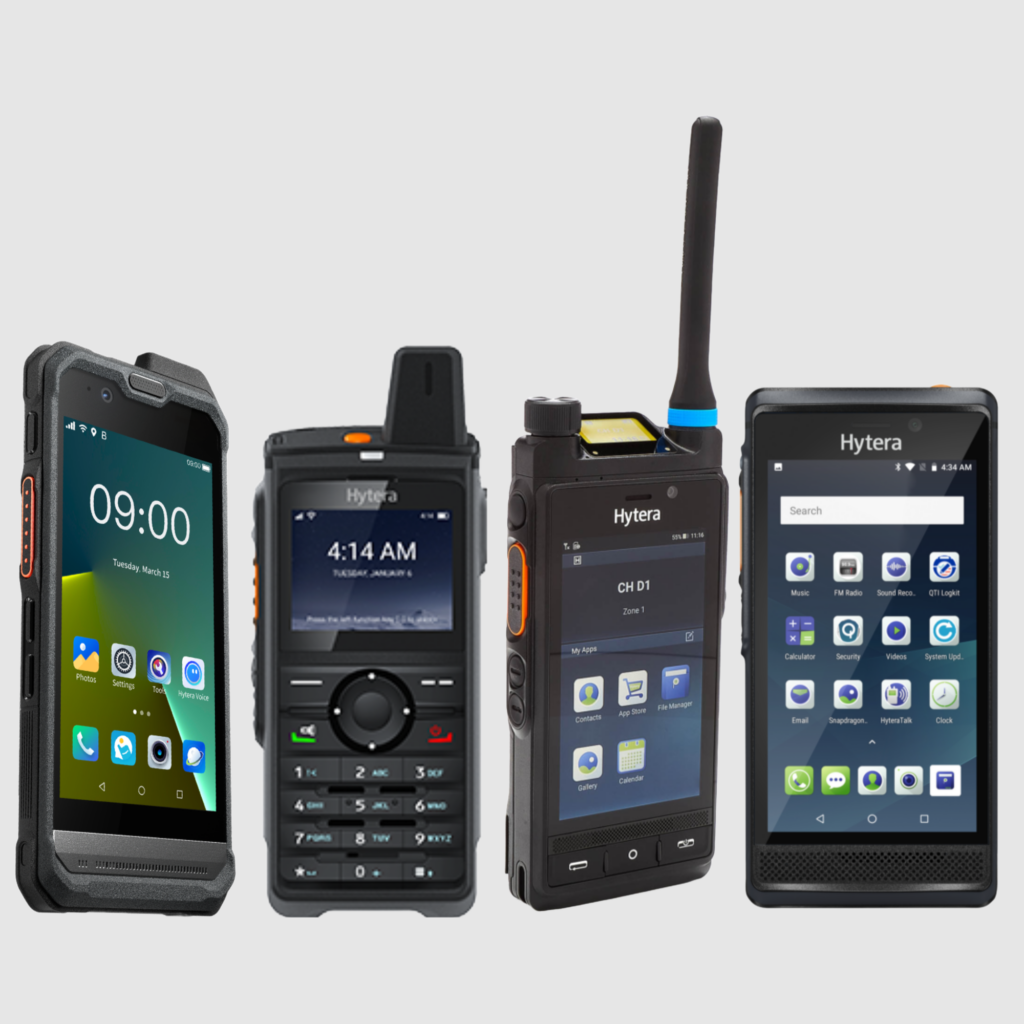
PTT/PoC Radios
Push-To-Talk-over-Cellular (PTToC) radios are devices that utilize cellular networks to establish a two-way communications system similar to traditional walkie-talkies or two-way radios. PTToC radios allow for instant communication between users with the push of a button and can be used for group communication or private conversations. These devices function through data connections and allow for remote communication without any range limitations. They are commonly used by businesses, government organizations, and emergency services to enhance communication and coordinate operations. PTToC radios are an efficient and cost-effective solution for businesses and other organizations that require constant communication over vast areas.
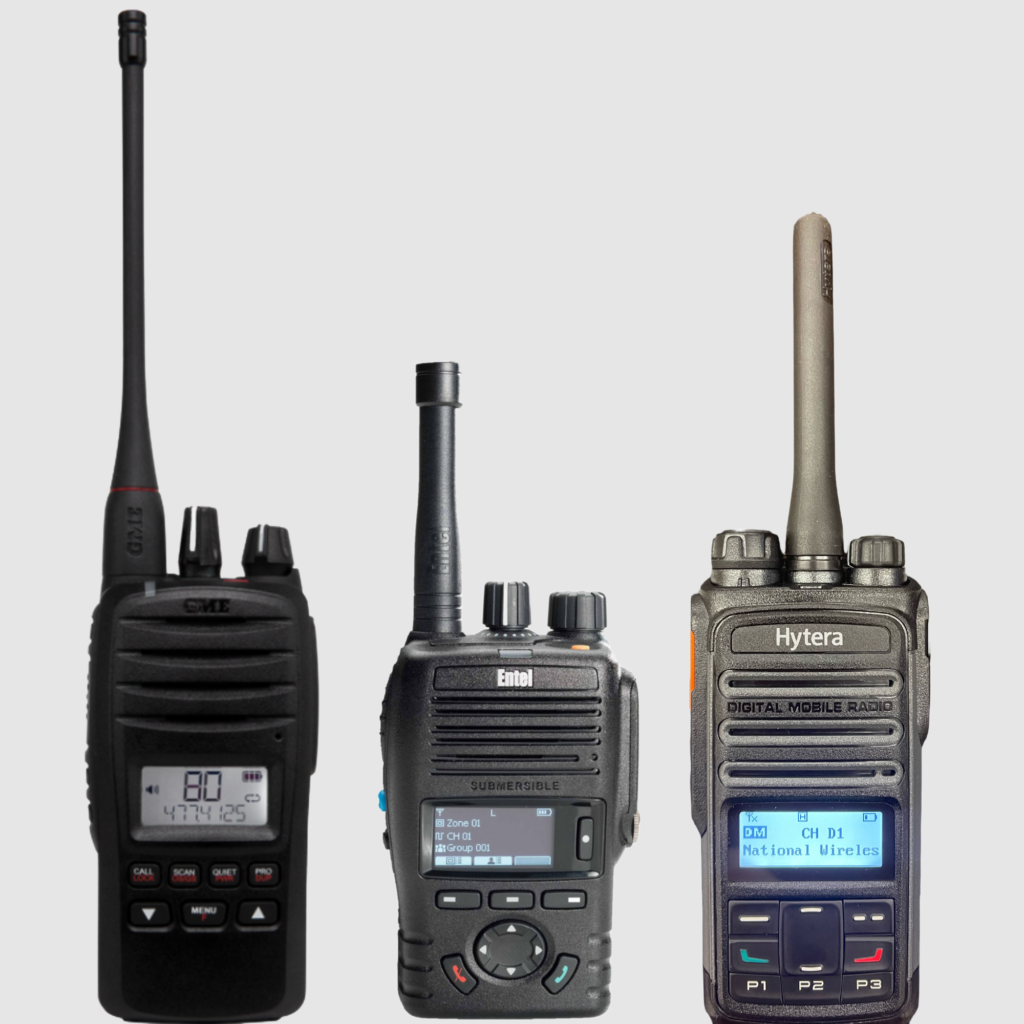
CB Radios
CB radios, also known as citizen band radios, are short-range, two-way radios that operate on a specific set of frequencies called CB channels. They were popular in the 1970s and 80s and were typically used by truckers, emergency responders, and amateur radio enthusiasts. CB radios have a limited range of around 1-5 miles, depending on the terrain and weather conditions. They are still used today in certain industries and for recreational purposes, but have largely been replaced by other advanced communication technologies.
